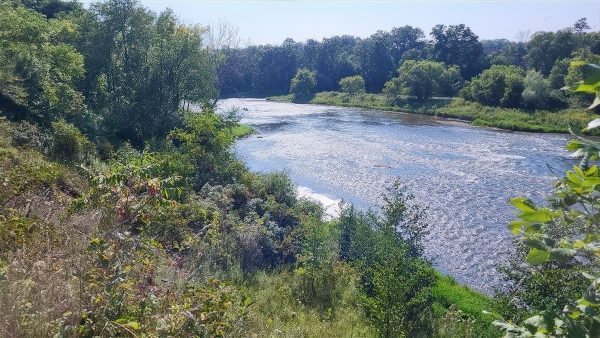Yuri Popoff, Trailblazing Chief Architect of WellnessLiving’s Software

Last Updated on 21 October, 2025
Long before tech was everywhere, Yuri Popoff was already captivated by how it all worked.
Home computers were just beginning to emerge as Yuri was growing up. He got his first hands-on childhood computer experience programming a calculator.
“I always liked computers,” he recalls. “So, I started with calculators. At some point, my parents bought me my first computer when I was 11 or 12. And here I am.”
That early spark of curiosity evolved into a lifelong passion for computing, problem-solving, and building complex software systems.
Today, Yuri is Chief Architect of WellnessLiving. He leads a globally distributed development team and oversees the powerful infrastructure that handles more than 1 billion database requests every single day.
But Yuri’s journey—both professionally and personally—has been anything but conventional.
From University Life to Startup
After earning his doctorate in computer science, Yuri became a professor at Donetsk National Technical University. Teaching, he admits, came naturally—both his parents and grandmother were teachers.
His approach was never about rote learning but about encouraging true understanding. He challenged his students to grasp concepts deeply and encouraged them to ask questions that ventured beyond textbooks.
It was a pedagogy that appealed to Alex Titov—who goes by Titov—now VP of Engineering at Wellness Living. They met in one of Yuri’s classes.
“Yuri was a young professor,” Titov explains. “He was hungry for modern technologies, for modern approaches.” His teaching style was more flexible, and less traditional, than other professors — and that worked for Titov. When Yuri floated the possibility of Titov joining Yuri’s new development project, he jumped at the opportunity to get his first professional programming experience.
In the early 2000s, Yuri had started a side project doing freelance web development, eventually founding a company with the goal of doing larger, more complex work.
An opportunity soon came from Canada: a contact in Yuri’s professional network was seeking developers for a new business. Although that project fizzled, the contact introduced Yuri to Len Fridman and Sasha Davids, the future founders of WellnessLiving.
Building WellnessLiving: The Evolving System
Before there was a billion-request-per-day database, there was just a small team and a big dream.
People are often impressed when they learn that the initial WellnessLiving platform was built in only four months. But as Yuri sees it, that was only the beginning. “We didn’t build WellnessLiving in four months. We’ve been building it for more than 13 years, and we’re still not finished.”
He still remembers writing the original documentation—just a straightforward outline of what Len and Sasha had envisioned. At the time, it felt manageable. But once the foundational platform was built, the requests kept coming. One idea led to the next, each feature building on the last.
“They asked to build an ice cream stand,” Yuri laughs, “and now it’s a city full of skyscrapers.”
What started as a focused blueprint had transformed into something far bigger, more complex, expansive, and still growing. Thirteen years later, that “ice cream stand” has grown into a powerful all-in-one business management platform used by fitness, wellness, and beauty professionals around the world.
“I hope it will never be finished,” Yuri adds. Just as technology continues to evolve and businesses—and their needs—continue to change. “It will grow indefinitely.”
Between Two Worlds: Building Through Upheaval
Behind the platform’s growth lies a deeply human story of resilience. Today, Yuri lives in Canada. But the journey that brought him there was far from straightforward. The war in Ukraine reshaped both lives and operations.
When the conflict began in 2014, Yuri—an experienced hiker—was in the midst of returning from a mountain trek in Tajikistan. He was en route back to Donetsk when the bombing began. Stuck at a transit point in his journey, he chose not to continue. “I realized it wasn’t safe to go back, so I decided to stay where I was.”
In the years that followed, Yuri and Titov continued working with a growing team of developers across borders and time zones to build WellnessLiving. But as the political situation worsened, new constraints emerged. By 2022, the company made the strategic decision to relocate both Yuri and Titov to Tbilisi, Georgia.
Georgia became a temporary base, but the challenges of geopolitical instability remained. After the 2022 invasion began, Yuri relocated once more—this time to Canada, at the company’s encouragement. “If not for the war, I wouldn’t be in Canada,” he says. “I never dreamed of coming to Canada, but I’m getting used to it.”
Meanwhile, Titov remained in Georgia, helping to coordinate and support a team that had become increasingly remote. “We had to close the offices,” Titov recalled. “Everyone works remotely now.” The offices in Donetsk, Kiev, and Kharkiv that once formed the company’s physical footprint in Ukraine were shuttered. The availability of basic services like electricity was unpredictable.
Beyond the professional impact, the emotional toll of the war is deeply personal. “My parents are in Ukraine, and of course, that bothers me,” Yuri says. Initially, they lived closer to the frontline of the conflict but have since moved. His sister and nephew are also in Ukraine.
“More or less, they are okay,” he says. “We talk almost every week.” But the weight of separation and uncertainty is ever-present.
And still, Yuri keeps building.
Into the Wild: The Quiet Strength of the Trail
Amid this backdrop of global and personal upheaval, Yuri found steadiness in something far removed from lines of code or breaking news—his love of nature, mountains, and countryside.
While he now calls Canada home, Yuri warmly recalls his past expeditions hiking mountains across Central Asia—Kazakhstan, Kyrgyzstan, Tajikistan, and the Caucasus—where high altitudes and shifting weather required careful planning, stamina, and adaptability.
To say Yuri is a serious hiker is perhaps an understatement: He has competed in championships and took third place with his team for an event in Kazakhstan. That was an especially grueling hike that lasted 21 days—18 of them in unrelenting rain. “Only three days without rain,” Yuri remembers. “Rain, rain, rain, and rain.”
More recently, Yuri tackled a new challenge closer to his new home: hiking Ontario’s Grand Valley Trail, all 250 kilometers of it, in just 13 days.
His method of tackling such a journey was reminiscent of a software sprint. Yuri followed a meticulous schedule: 45 to 50 minutes of walking followed by 10 to 15 minutes of rest, repeated eight times a day. And yes, he worked through the entire hike. During those rest breaks, he pulled out his phone to answer Microsoft Teams messages. In the evenings, he opened his laptop to work on more complex issues.
“There’s even a photo of me working in my tent,” he says with a smile.
Though different from mountain hikes, the Ontario trail offered its own scenic views. Yuri recalls one spot near the halfway point in his journey, deep in the forest, beside a river. “It was very beautiful.”

The Road Ahead: The Platform That Never Stands Still
Back at the digital drawing board, Yuri’s focus is on the ever-evolving architecture of the WellnessLiving platform. With 100 computers working together to handle a massive load of simultaneous transactions—bookings, purchases, reviews, check-ins—Yuri and his team are constantly finding new ways to optimize performance and scalability.
He doesn’t spend much time imagining a finished version of WellnessLiving. To him, the point is that it keeps evolving.
“Everything changes so rapidly,” he says. “Now it’s all about microservices and AI. A few years ago, none of this existed in the same way.”
As Chief Architect, he leads the platform’s technical growth with the same methodical tenacity he applies to hiking—consistent steps, thoughtful breaks, and progress that builds over time.
“I love working at WellnessLiving because I’m constantly challenged with complex problems that push me to grow,” he says. “They’re not easy to understand—let alone solve—but we figure them out. And that’s incredibly rewarding.”





